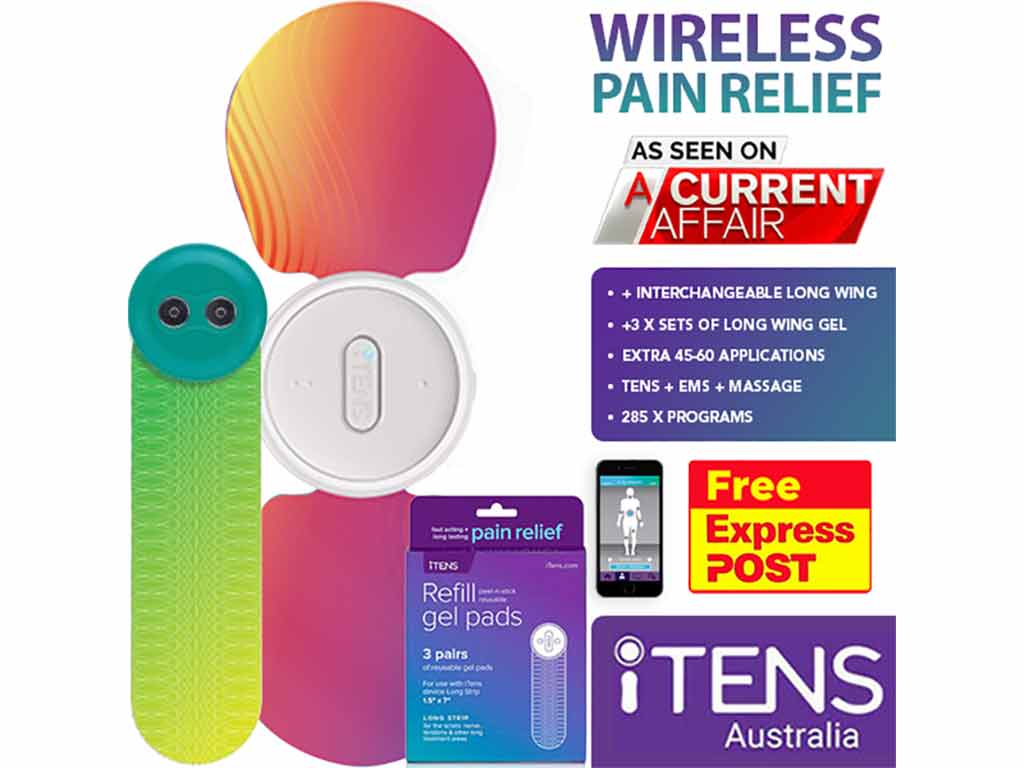
Transcutaneous Electrical Nerve Stimulation, or TENS treatment, is a method of pain relief that involves using an electronic device. The unit sends electrical currents through the skin to reach the underlying nerves. Accordingly, this electrical stimulation operates behind various mechanisms of action. It includes the pain gate mechanism and endorphin release. Furthermore, TENS therapy offers several benefits. It is non-invasive, drug-free, safe, customisable, convenient, and cost-effective.
Living with pain can be incredibly challenging. Hence, an effective pain management solution is essential. Traditional forms of pain relief may include physical therapy and medications. However, these techniques may not provide adequate relief or have side effects. Fortunately, TENS therapy offers a safe and promising solution to ease discomfort. It has been used for decades to manage various types of pain. This article will present TENS therapy, its mechanisms of action, and its benefits.
What is TENS Treatment?
TENS treatment is a therapy that employs low-voltage electric currents to relieve discomfort. The technique involves the use of a small, battery-operated electrical device. Accordingly, the unit delivers electrical pulses through electrode patches placed on the skin. TENS therapy is popular among pain clinics, physical therapists, health professionals, and individuals.
The TENS devices are available in wired and wireless functionalities. Nevertheless, the choice depends on the lifestyle and preferences of the user. Wired units connect electrodes to the device via lead cables. These devices are often more affordable. Conversely, wireless units offer greater freedom of movement and convenience. It eliminates the need for physical wires, and individuals can control it using a smartphone.
Conducting TENS therapy is easy. Start by consulting a healthcare professional to ensure that TENS is a safe option. Once cleared for use, locate the treatment area and clean the skin. Next, attach the electrode pads adhering to the electrode placement guide. Finally, turn on the TENS unit and adjust the settings. TENS sessions typically last 15 to 30 minutes and can be repeated multiple times daily, depending on recommendations.
Types of Pain Treated with TENS
- Chronic pain conditions: Refers to long-standing, persistent discomfort that lasts for months or years. Examples include arthritis pain, backaches, and fibromyalgia.
- Acute pain: It involves sudden, sharp discomfort. Conditions like postoperative pain, primary dysmenorrhoea, labour pain, and injuries can benefit from TENS.
- Neuropathic pain: It arises from damage or dysfunction in the nervous system. These include diabetic neuropathy, sciatica, and phantom pain.
- Musculoskeletal pain: It pertains to issues affecting the bones, muscles, ligaments, and tendons. Knee osteoarthritis pain and rheumatoid arthritis can benefit from TENS.
- Muscular discomfort: TENS therapy helps by relaxing the muscles, reducing spasms, and alleviating tension.

Mechanisms of Action Behind TENS Treatment
TENS treatment operates through various analgesic mechanisms. Foremost, the Pain Gate Theory. It suggests that TENS therapy works by closing the “gate” to pain signals sent to the brain. The electrical impulses from TENS can travel faster than the pain messages. As a result, the electrical currents reach the brain first, effectively blocking or reducing the perception of discomfort.
Endorphin release represents another fundamental mechanism through which TENS alleviate pain. These are the natural pain-relieving chemicals of the body. The electrical stimulation encourages the body to produce and release endorphins. Once released, endorphins bind to receptors in the brain. Hence, it leads to a reduction in pain perception and induces a sense of well-being.
In addition, TENS therapy enhances blood flow to the targeted area. The electrical impulses stimulate the blood vessels. It causes them to expand and increase blood flow. Improved blood circulation brings essential nutrients and oxygen to the injured or painful area. Consequently, this facilitates healing and recovery. Furthermore, it helps remove waste products and reduce inflammation.
Understanding Frequencies and Intensities
Frequencies and intensities in TENS play a crucial role in its effectiveness. Frequency, measured in Hertz (Hz), refers to the number of electrical pulses sent to the body per second. Different frequencies target different types of pain. Low frequencies, typically between 1 to 10 Hz, are valuable for managing chronic conditions. Meanwhile, higher frequencies, usually from 50 to 120 Hz, are effective for addressing acute conditions.
On the other hand, intensity describes the strength of the electrical impulses and is measured in Milliamperes (mA). The proper intensity level is subjective and varies from person to person. It should be strong enough without causing discomfort.

Benefits of TENS Treatment
TENS treatment offers numerous benefits. Firstly, TENS therapy provides targeted relief. Its precision ensures that relief is focused where it is most needed. Secondly, TENS is non-invasive. It does not require surgical procedures or penetration of the skin to deliver results. Thirdly, the treatment solution is drug-free. It alleviates discomfort without the need for medication, thereby eliminating the potential side effects.
Customisability is a crucial feature of TENS. The pulse rate, intensity level, and duration can be adjusted to cater to the unique tolerance and condition of each individual. TENS devices are also convenient and portable. They are typically compact, allowing people to use them at home, work, or on the go. Nevertheless, this convenience ensures that pain relief is readily accessible whenever needed.
Furthermore, TENS therapy is cost-effective. Once the initial investment is made, the ongoing costs are minimal. TENS also serves as a complementary therapy alongside other treatment methods. It can enhance the effects of physiotherapy and massage. Finally, TENS is safe with minimal side effects. The risk of adverse reactions is extremely low, making it a suitable option.
Are There Potential Side Effects?
Yes. While TENS is generally safe, it can have a small risk of potential side effects. Skin irritation is one of the most common side effects. To mitigate this risk, users are advised to regularly check the skin and ensure the skin is clean before application. Accordingly, muscle twitching represents another potential side effect. Adjusting the settings to a more comfortable level can alleviate this issue.
Additionally, allergic reactions to the electrode pads or the materials used in them can occur in some users. To prevent such reactions, it is advisable for users to opt for hypoallergenic pads.
Conclusion
In conclusion, TENS treatment has been proven to be a safe and effective method for managing pain. The technique involves the use of a wired or wireless electrical device that sends electrical pulses to the body. Accordingly, TENS therapy operates behind various analgesic mechanisms. It includes the pain gate mechanism, the release of endorphins, and the improvement of blood flow. Additionally, the electrical currents can stream in different frequencies (low and high) and intensities.
Moreover, the treatment solution can manage various types of pain. It can address arthritis, primary dysmenorrhoea, phantom pain, rheumatoid arthritis, muscle spasms, and more. Aside from that, TENS therapy offers several benefits. It is safe, non-invasive, drug-free, customisable, convenient, and cost-effective. Also, it provides targeted relief and can complement other treatment programs. However, while TENS is safe, it is crucial to recognise the potential side effects to ensure optimal treatment.







